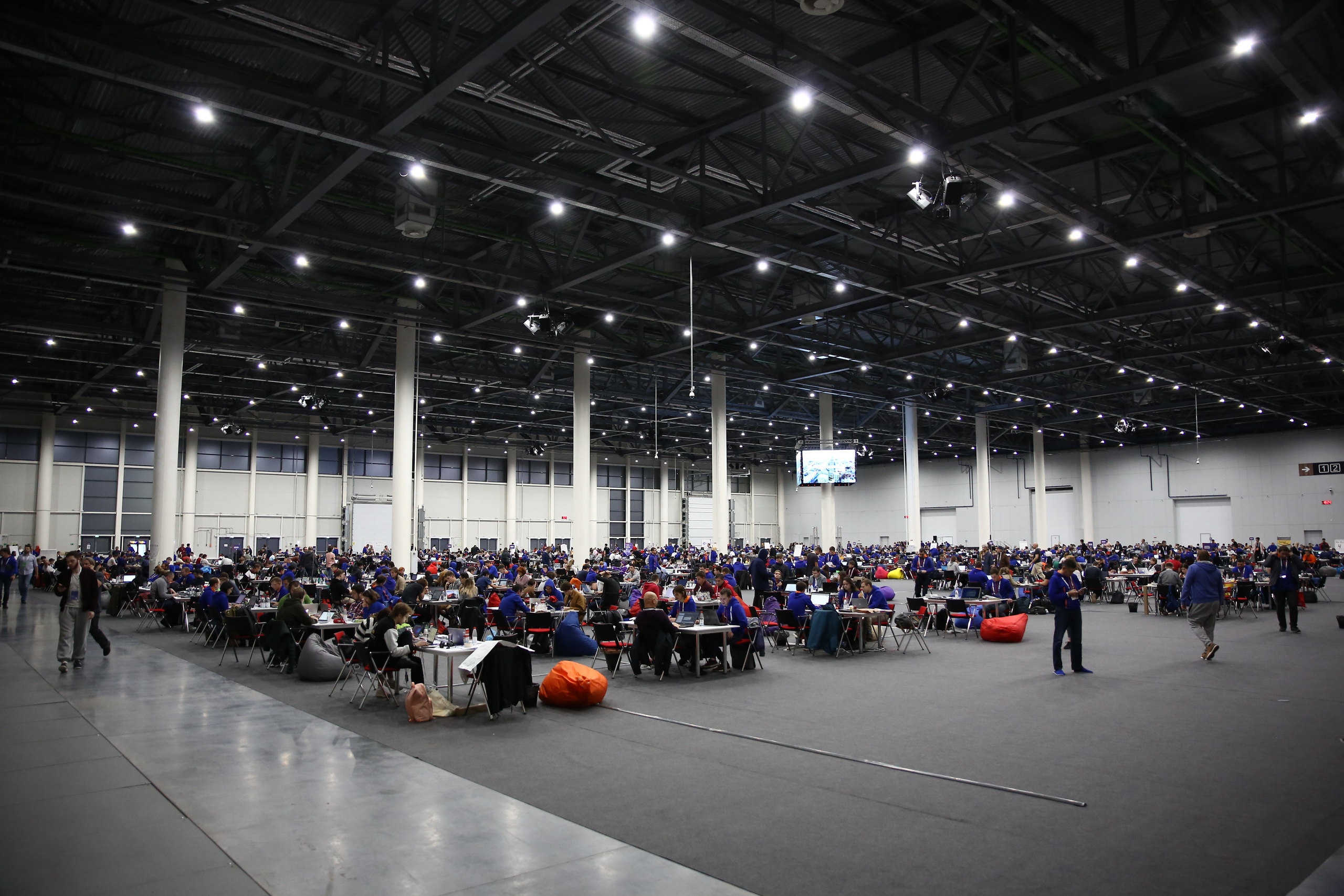
The final of the competition was held in Kazan from September 27 to 29 at the Kazan Expo, where just a month ago, the best specialists of the world competed in various disciplines at the World Skills Championship.
Vladislav Faustov, Ficus team (winner in the nomination of the Ministry of Construction) : “I was impressed by the Kazan-Expo exhibition complex, which hosted the hackathon. An interesting feeling is when at night (guests are gone, hackers are sleeping or working) in slippers and shorts you walk through huge spaces past empty stands of Megafon, Rostelecom and other partners of the event. As if the child was locked in a mall. I was also surprised by the rebuilt halls and meeting rooms (whoever played in Portal will understand what I'm talking about) . ”3500 participants (650 teams) of participants from all over Russia came to the site. And our hackathon is almost 200 experts, 120 jury members, 106 winners, 48 hours of work, 26 nominations, 10 million of the prize fund, 3 classrooms (schoolchildren, students and finalists of the regional stage). They say that someone even saw a tyrannosaurus, a smurf and a pikachu. Here are these:
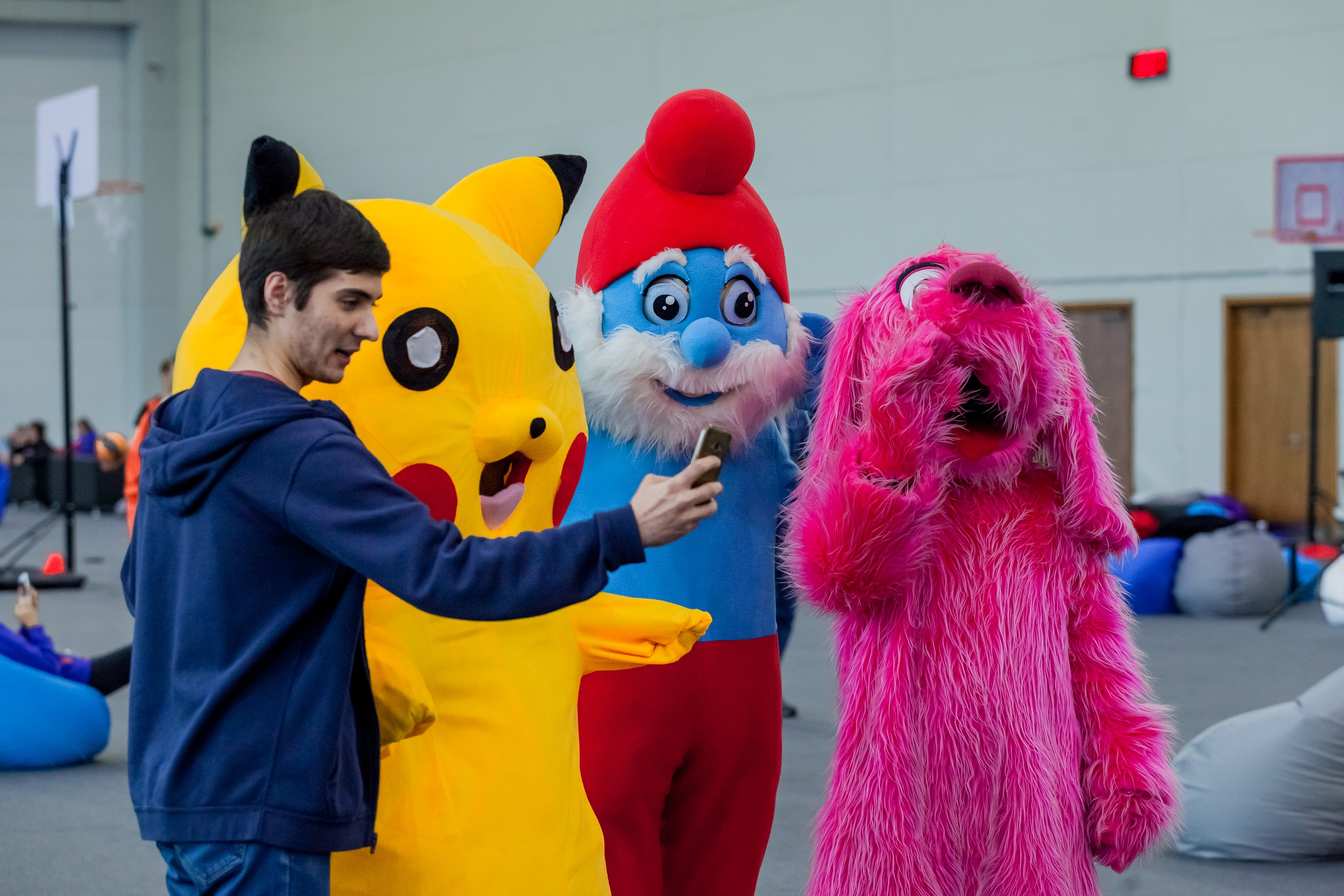
By the way, these costumes are not animators (as you might think), but members of the Pika pika team, which worked in the Rostelecom nomination. This masquerade discharged the atmosphere of hard coding - no one was ready to let people in such bright clothes and not take a photo with them.
And here is another character that could be found in the corridors of Kazan Expo:
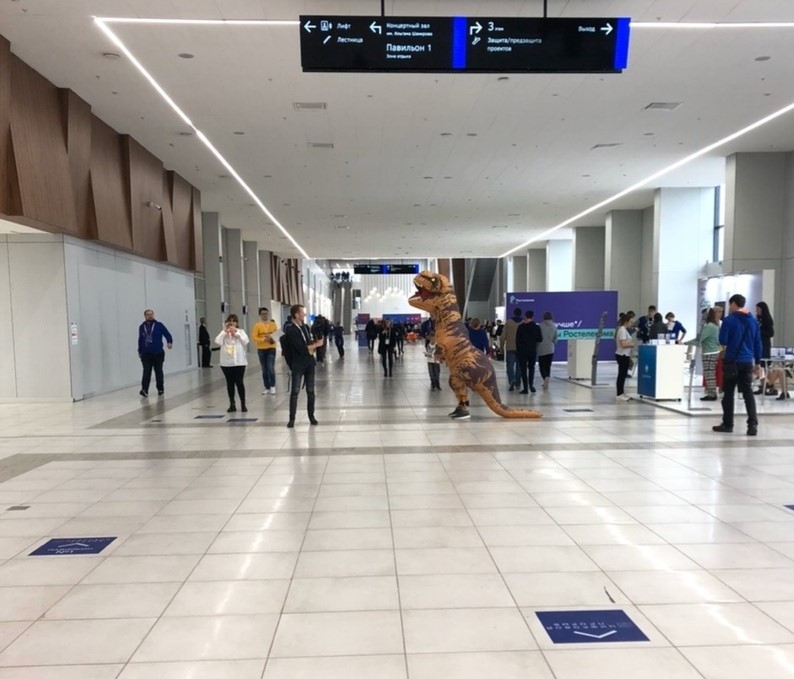
Some formal details
All tasks were formed on the basis of the main “pains” of private and state-owned companies - they need fresh ideas and crowds of young specialists with top-level skills, from which you can choose the most “star” ones. In general, there were 26 nominations (6 of them were student ones). All tasks were free of olympiad formulations - the participants of this at school and university had enough;)
List of partners and tasks
The Ministry of Communications of Russia - a prototype of software for automatic verification of duplication of program code in public procurement
Federal Tax Service of Russia - software for a single certification center that will reduce the number of fraudulent activities associated with the use of electronic signatures
Rosstat is an online product that allows you to attract citizens to actively participate in the 2020 census and, based on the census, present its results in a visual form (visualization of big data).
The Central Bank of the Russian Federation is a mobile application that allows you to collect the opinions of an external audience about the initiatives of the Bank of Russia for the purpose of public discussion, to ensure the processing of the results of such a discussion.
The Ministry of Informatization and Communications of the Republic of Tatarstan is a prototype platform that will allow existing government services to be translated into electronic form by analysts, without involving developers.
Ministry of Industry and Trade of Russia - AR / VR-solutions for quality control of the implementation of special technological processes at industrial enterprises.
The State Atomic Energy Corporation Rosatom is a platform that allows you to create a map of the production facilities of an enterprise, lay optimal logistic routes on it, and track the movement of parts.
Gazprom Neft is a data analysis service for inspection of transport pipelines.
The Sochi Digital Valley Foundation is a prototype scalable mobile application with an offline solution for validating electronic documents.
The Ministry of Transport of Russia is a mobile application (and an application for a central server) that will allow transmitting data on the level of availability of a mobile network and, based on it, make up an actual map of network coverage.
Federal Passenger Company is a prototype of a mobile application that allows a passenger to order food delivery from restaurants located in cities along the train route.
The Russian Ministry of Health is a prototype system for monitoring the general condition of a person working at a computer using pattern recognition and modeling human behavior.
The Accounts Chamber of the Russian Federation - software that allows for statistical analysis and visualization of the results of the creation of an all-Russian network of perinatal centers
ANO “Russia is a country of opportunities” is a prototype software for tracking the employment of university graduates, analyzing and forecasting the demand for certain professions.
MTS is a prototype platform for the retraining of specialists who are released in companies due to the digitalization of business processes.
The Ministry of Construction of Russia - software for an inventory of heat and water supply systems, the formation of engineering infrastructure facilities based on the results of monitoring the regional geographic information system.
MegaFon is a universal web application for enterprises in the field of housing and communal services, which allows you to recognize the meaning of the appeal, distribute the appeal among the responsible employees and track their implementation.
Rostelecom is a prototype information and service system for monitoring garbage collection and processing points.
The Association of Volunteer Centers is a prototype web service for stimulating social and civic activity through competitive and micro-grant mechanisms.
Mail.ru Group is a prototype of a service for organizing volunteer projects on a social network platform.
Federal Tax Service of Russia - software for a single certification center that will reduce the number of fraudulent activities associated with the use of electronic signatures
Rosstat is an online product that allows you to attract citizens to actively participate in the 2020 census and, based on the census, present its results in a visual form (visualization of big data).
The Central Bank of the Russian Federation is a mobile application that allows you to collect the opinions of an external audience about the initiatives of the Bank of Russia for the purpose of public discussion, to ensure the processing of the results of such a discussion.
The Ministry of Informatization and Communications of the Republic of Tatarstan is a prototype platform that will allow existing government services to be translated into electronic form by analysts, without involving developers.
Ministry of Industry and Trade of Russia - AR / VR-solutions for quality control of the implementation of special technological processes at industrial enterprises.
The State Atomic Energy Corporation Rosatom is a platform that allows you to create a map of the production facilities of an enterprise, lay optimal logistic routes on it, and track the movement of parts.
Gazprom Neft is a data analysis service for inspection of transport pipelines.
The Sochi Digital Valley Foundation is a prototype scalable mobile application with an offline solution for validating electronic documents.
The Ministry of Transport of Russia is a mobile application (and an application for a central server) that will allow transmitting data on the level of availability of a mobile network and, based on it, make up an actual map of network coverage.
Federal Passenger Company is a prototype of a mobile application that allows a passenger to order food delivery from restaurants located in cities along the train route.
The Russian Ministry of Health is a prototype system for monitoring the general condition of a person working at a computer using pattern recognition and modeling human behavior.
The Accounts Chamber of the Russian Federation - software that allows for statistical analysis and visualization of the results of the creation of an all-Russian network of perinatal centers
ANO “Russia is a country of opportunities” is a prototype software for tracking the employment of university graduates, analyzing and forecasting the demand for certain professions.
MTS is a prototype platform for the retraining of specialists who are released in companies due to the digitalization of business processes.
The Ministry of Construction of Russia - software for an inventory of heat and water supply systems, the formation of engineering infrastructure facilities based on the results of monitoring the regional geographic information system.
MegaFon is a universal web application for enterprises in the field of housing and communal services, which allows you to recognize the meaning of the appeal, distribute the appeal among the responsible employees and track their implementation.
Rostelecom is a prototype information and service system for monitoring garbage collection and processing points.
The Association of Volunteer Centers is a prototype web service for stimulating social and civic activity through competitive and micro-grant mechanisms.
Mail.ru Group is a prototype of a service for organizing volunteer projects on a social network platform.
Who participated in the hackathon:
- teams of schoolchildren from the Republic of Tatarstan
- Teams of technical students from all over Russia
- finalist teams of the regional stages (these are 40 hackathons in June and July)
We know that some were embarrassed by the wording of the tasks. To make it clear what problems arose, we asked the teams about this.
Andrei Pavlenko from the team “A step away from the deadline”: “I don’t know how it was in other tracks, but our task was set as clearly as possible, although this did not interfere with creative thinking and adding new functionality, thinking about variations of what was requested.”
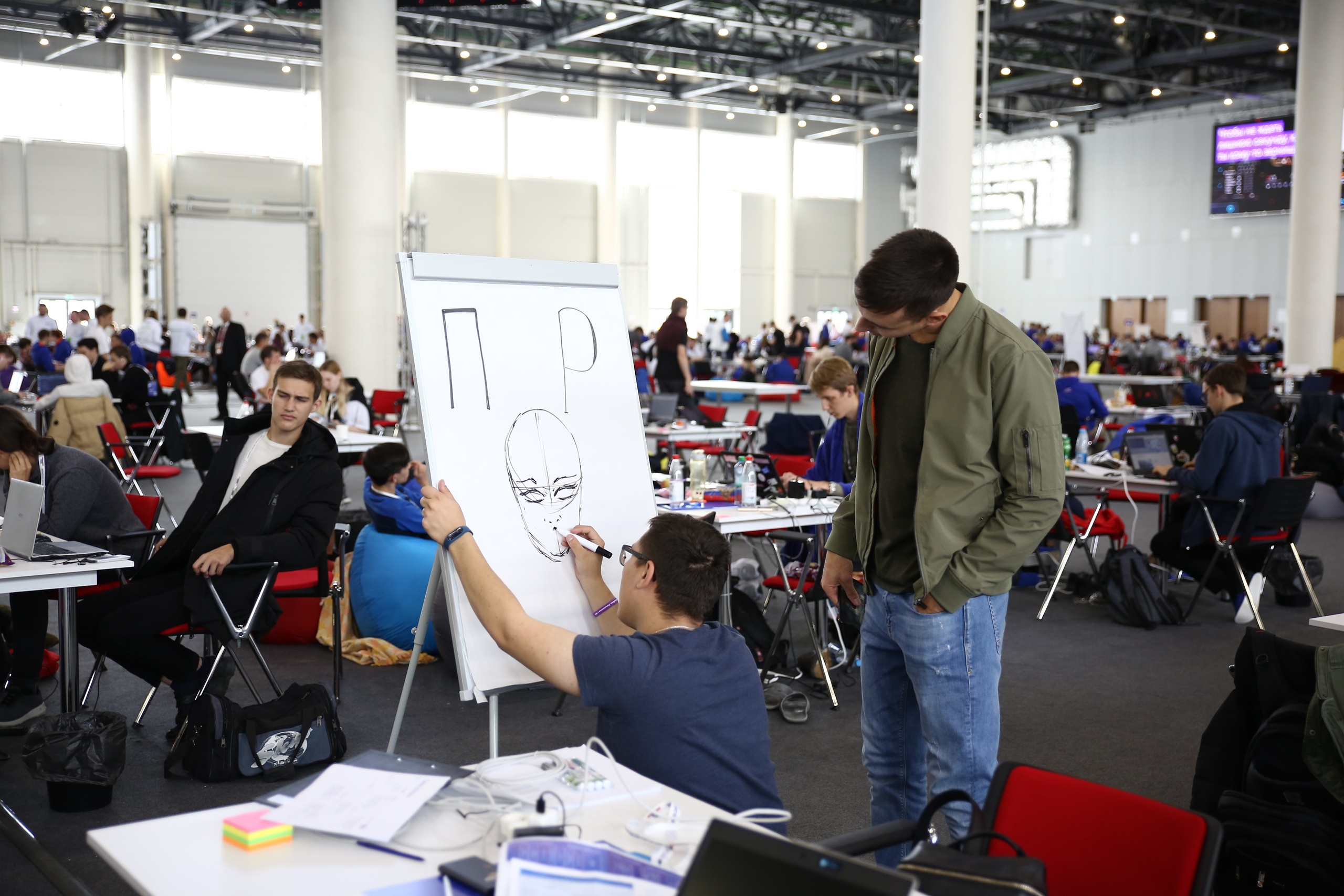
Kirill Skosyrev, AVM team: “The reasonability of the tasks, of course, was not ideal. At least in our track: the task was to develop software for augmented reality glasses, but, unfortunately, there was no equipment for testing. Nevertheless, we got out of the situation and independently solved the problem - we are entrepreneurs :) ”.
Vitaly Savenkov, Black Pixel team (winner in the Ministry of Health nomination): “We have significantly expanded the prototype functionality with our groundwork from the regional semi-final. Formally, the technical task required the creation of a service for monitoring the general condition of personnel when working at a computer. To pre-protect, we also had a workable prototype of a system not only for analyzing the condition, but also for preventing various diseases and monitoring the effectiveness of their treatment. Therefore, even if the wording is not entirely clear, you can work with it. ”Vladislav Faustov, Ficus team: “Of the 20 nominations, we immediately selected those where the task was more or less transparently formulated. Some were too simple, but it is not clear what they want. Somewhere it’s clear what they want, but the challenge is clearly not for the hackathon. We settled on the golden mean to have less competition, and that the task was too tough. In any case, the wording of the assignment that we receive is simply a name, followed by TK without any specifics. It will be great if next time the participants, in addition to TK, make a reference on this topic, because I want to spend time on the product, and not on “gugelezh”. At least minimal background information and sample data sets would have a very positive effect on the result. It was quite difficult for us to delve into the sphere of construction and housing and communal services in two days, but everything seemed to work out :)
By the way, we received a lot of feedback and indignation that they evaluated everyone non-transparently and generally incomprehensibly - we will devote the next post to this issue and tell you everything.
We catch the moments
Our youngest participant, Amir Risaev, turned 13 years old on the opening day of the hackathon. What kind of parties did you have at school? Instead of a boring get-together in festive triangular caps, he received congratulations from the First Deputy Head of the Presidential Administration, Sergei Kiriyenko, and also “bathed” in enthusiastic applause from the audience.
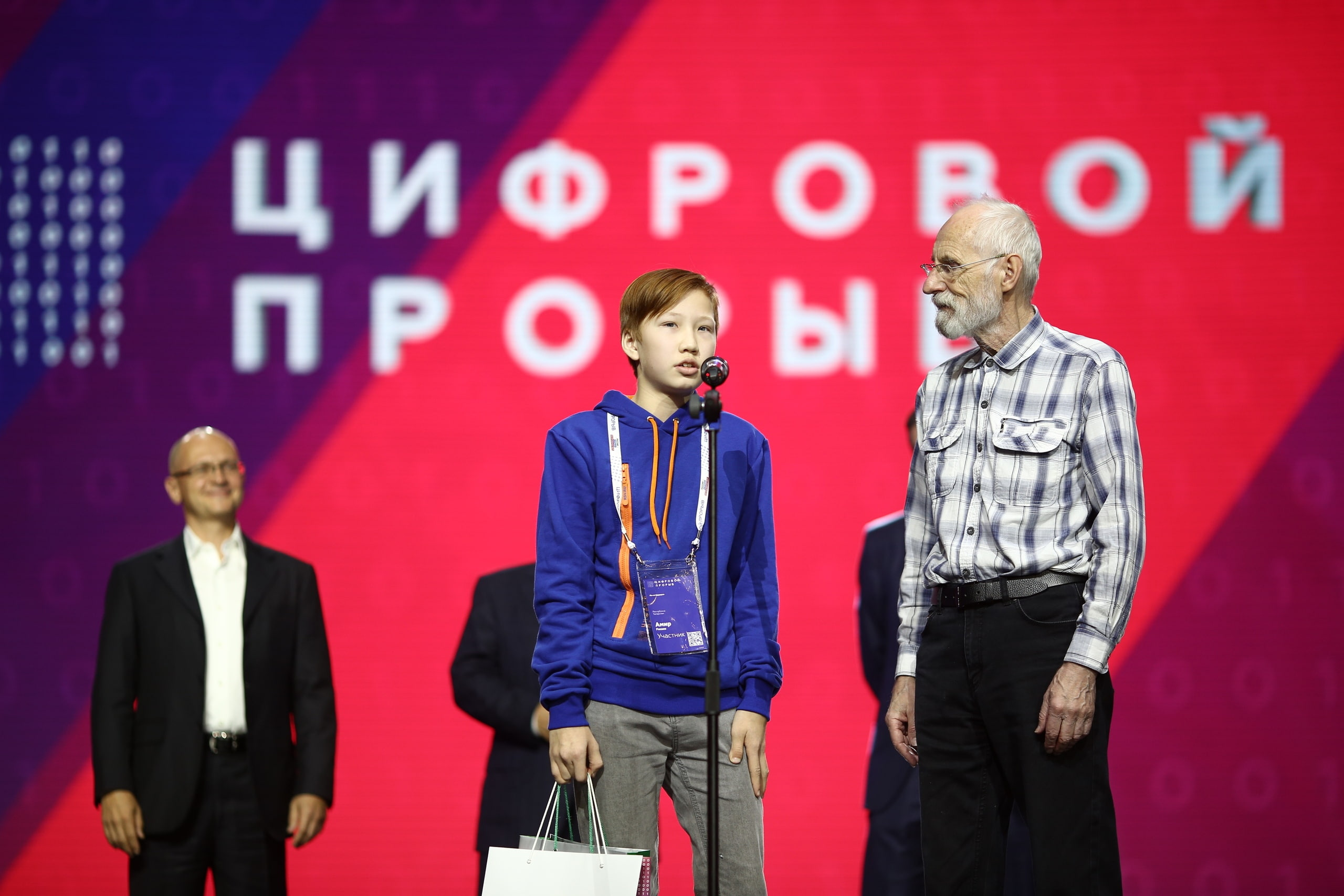
By the way, Amir himself (despite his age) leads a completely non-childish life. He studies at the University of Talents of the Republic of Tatarstan, and enjoys programming and robotics from elementary school. Still manages to learn Chinese and go to the pool.
Next to him is our oldest participant and part-time star and "ambassador" of the competition - Evgeny Polishchuk.
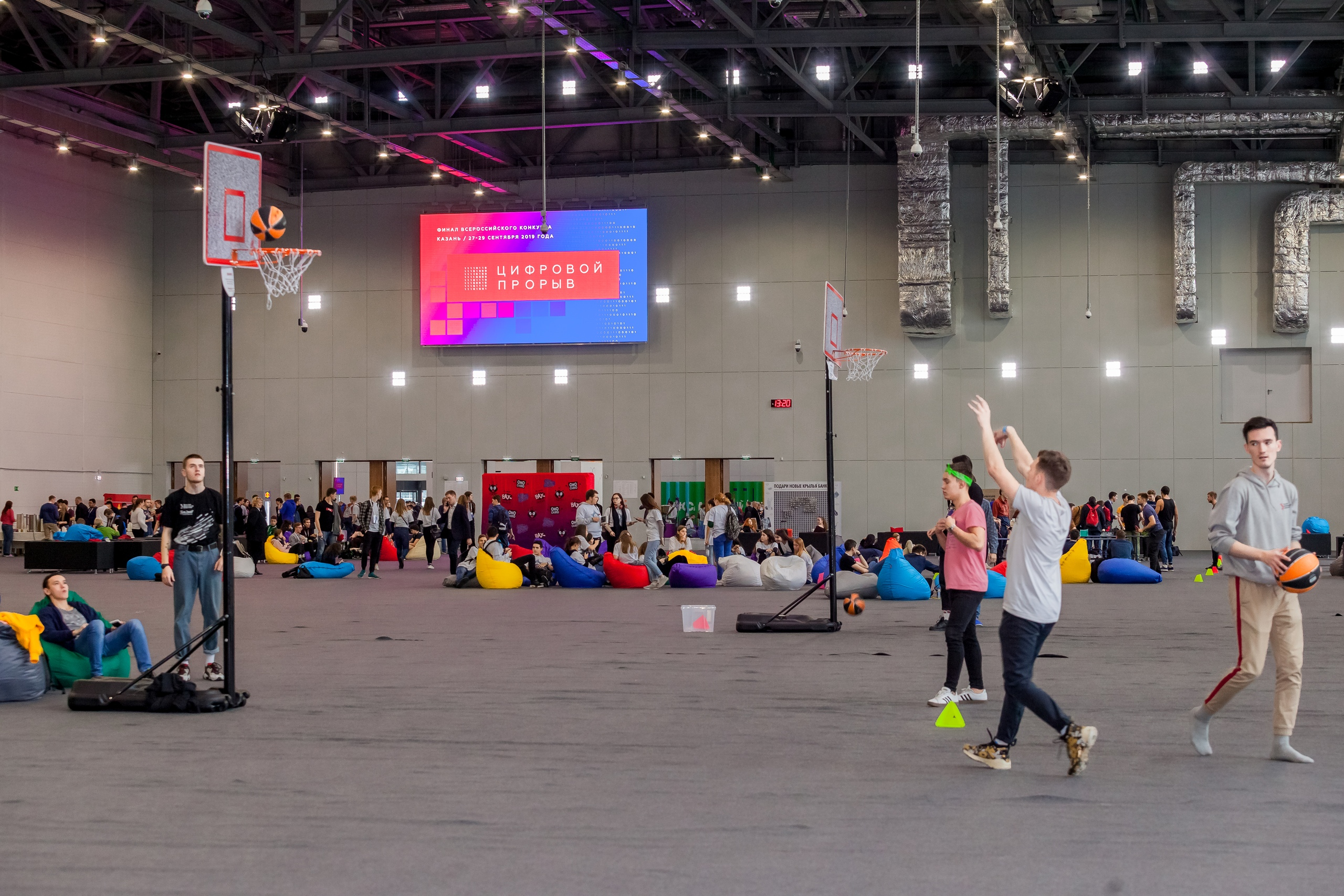
The participants of the main, “adult” hackathon worked in two
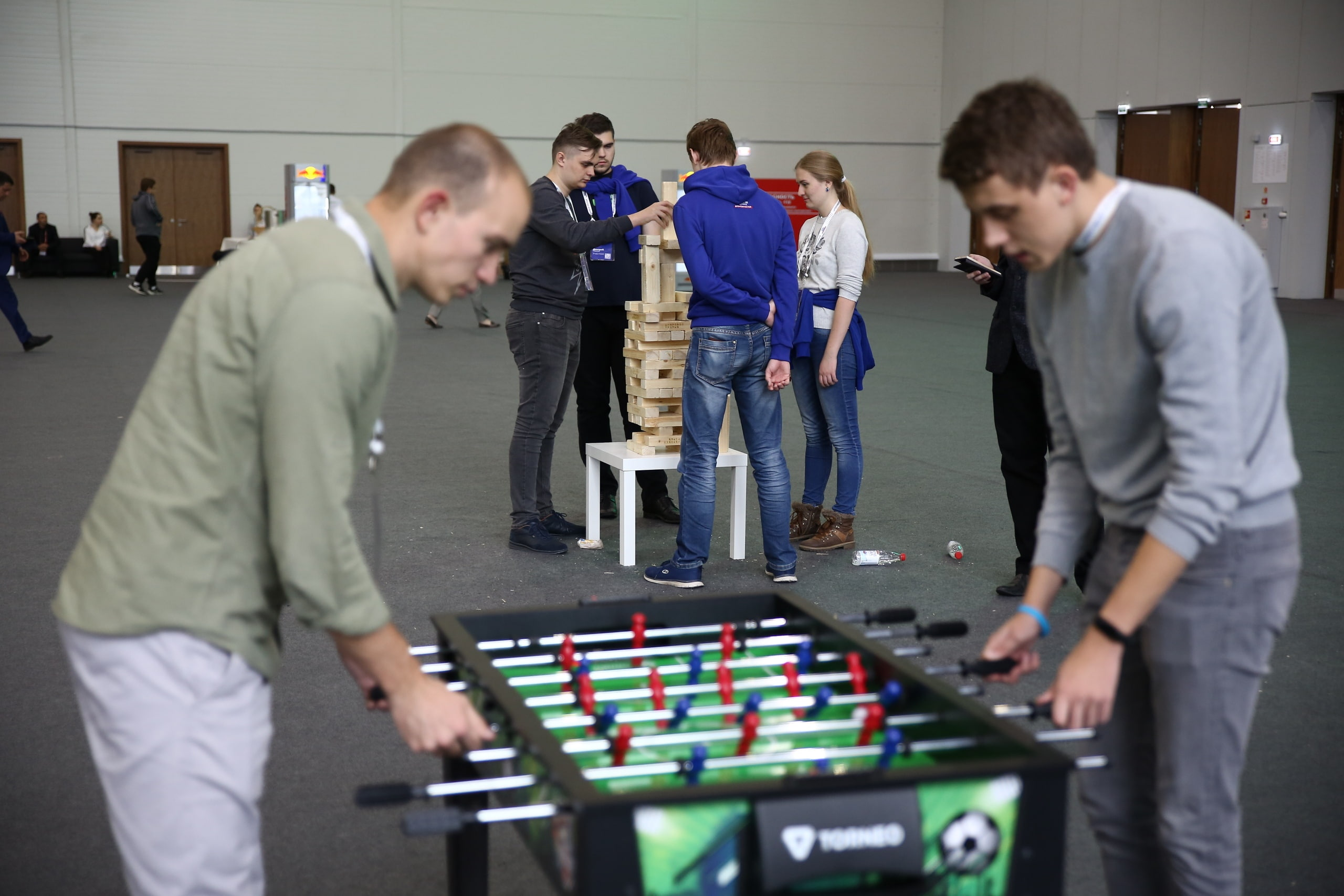
The second day the teams worked under the strict supervision of the Guinness Book of Records commission. We all understand that a well-fed IT specialist is an effective IT specialist, but the Guinness didn’t care about it - sit and code for 12 hours. I had to get out and feed everyone right at the workplace.
Several teams told about their secrets of survival, who had their own life hacks for productive work, even when “in cramped conditions, but not in insult”.

Kirill Skosyrev, AVM team: “The motivation for victory and the feeling of fierce competition kept in tone at the hackathon. Well, during the working day, they were reinforced with energy and coffee, like everyone else. Working without sleep was not our goal. We are for relaxation and healthy sleep. But on the second day, frankly, there was an understanding that not everything was being done. Therefore, my wife and I slept a couple of hours in order to be at least without bags under the eyes, but the developers did not sleep at all. ”
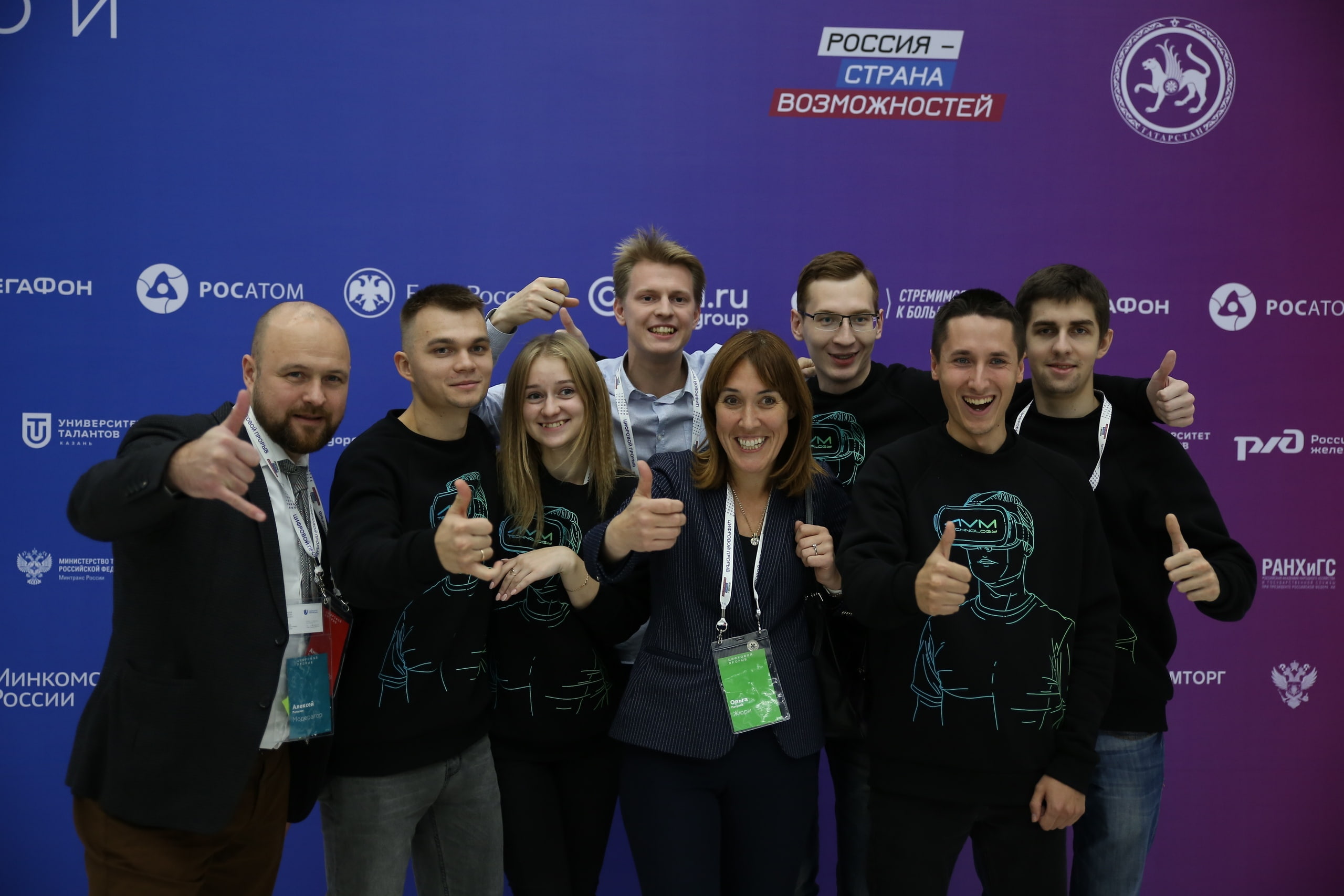
Vladislav Faustov, Ficus team: “Everyone slept from our team for about 2-3 hours every night. Someone was relaxing at the workplace (there were padded stools near each table), someone in the lounge - by the way, there were not only exercise equipment for sleeping (sofas), but also for sports activities. Basketball, ping pong, kicker (table football), big jenga, a wall for climbers - all this was at our disposal. When we realized that we were mentally tired, we were going to throw the ball into the ring.
One of the most important factors for survival and further victory is the supply of provisions. For the participants, meals were organized in the dining room, but they did not always have time, and sometimes the food ran out. Therefore, it was necessary to replenish stocks of buns. snacks, drinking water and more. In our room near us there were snacks, tea, and sometimes energy.
Another secret of success, which was realized only later - we sat closest to the toilet. This meant that our team saved time on round trips. Brief recommendations for survival: occupy the best strategic places, eat and drink more and do not hesitate to go to the toilet, with a 48-hour hackathon the optimal sleep is 3 + 2 hours, sometimes warm up. ”
On the third day in the morning, the teams went to pre-defense. All who successfully overcame this stage were admitted to the final defenses and the struggle for the main prize, honor, fame, respect and “mother-in-law”.

And, yes, we made Guinness! They became the largest hackathon in the world, breaking last year's Saudi record. Here you can watch a video of how the chief judge of the Guinness Book of Records announced it on stage (goosebumps!).

Marat Nabbiulin, goAI team (winner in the nomination from MTS): “The Digital Breakthrough contest is the Big Story that we touched. It became a crucible for our team and allowed us to gain invaluable experience in quickly finding solutions and creating a valuable product. Thanks from the whole team to those who came up with and brought this idea to life. Thanks to the organizers for their care, for the experts, for moving and excellent food. Thank you for organizing the Guinness World Record. Thanks to the opposing teams for their stamina and the will to win. The story does not end there. This is only the finale of the first part . "
The winners of the first season of the competition were 26 teams - now they have to finalize the prototypes in the pre-accelerator under the guidance of mentors and experts from partner companies. With them 34 more teams will be pumped, which received positive ratings from our expert jury.